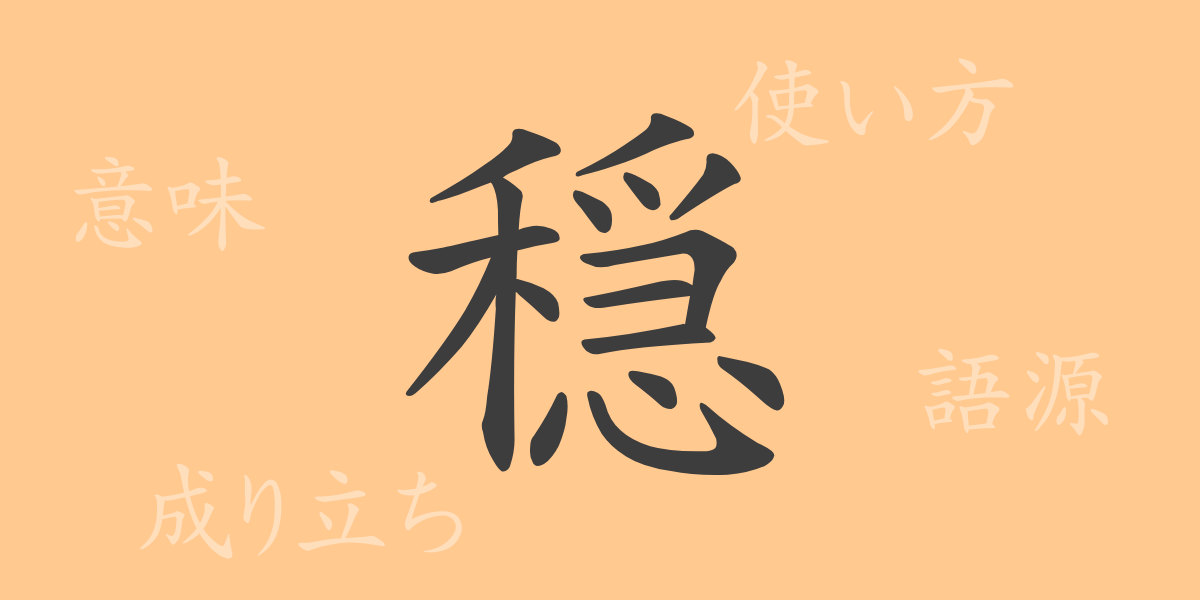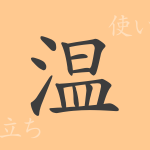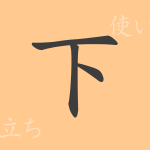“
The Japanese language has a rich vocabulary for expressing emotions and situations. Among them, the kanji “”穏”” (On) is one of the most commonly used words in daily life. In this article, we will focus on the kanji “”穏”” (On), exploring everything from its origin to its modern usage, as well as the idioms and phrases that include this kanji. Readers will be able to feel the depth of meaning that “”穏”” (On) holds and the beauty of the Japanese language once again.
The Origin (Etymology) of 穏 (On)
The kanji “”穏”” (On) was born in ancient China. Tracing its etymology, this character originates from “”穀”” (Koku), which means “”a storehouse for storing grain,”” and later came to be used as a word representing a state of mind. This kanji, which is also connected to the word “”穏やか”” (Oda-yaka, calm), originally referred to a state of abundant resources and peace of mind, and it is thought to have derived from there to meanings such as tranquility and calmness.
The Meaning and Usage of 穏 ( On)
The kanji “”穏”” (On) is mainly used to describe a peaceful and calm state or a gentle nature. In Japanese, it is common to use it as an adjective, such as in “”穏やかな海”” (Oda-yaka na -umi, calm sea) or “”穏やかな性格”” (Oda-yaka na seikaku, gentle personality). It is also used in the phrase “”穏便に解決する”” (Onbin- ni -kaiketsu -suru, to resolve quietly and smoothly), which is often heard in business situations, implying resolving problems or disputes quietly and smoothly.
Reading, Stroke Count, and Radical of 穏 ( On)
To understand the kanji “”穏”” (On), it is important to know its reading and component elements.
- Reading: The on’yomi reading is “”おん”” (On), and there is no specific kun’yomi reading.
- Stroke Count: “”穏”” (On) consists of a total of 16 strokes.
- Radical: The radical of “”穏”” (On) is “”穴”” (Ana), and it is classified as a kanji related to holes.
Idioms, Phrases, and Proverbs Using 穏 (On) and Their Meanings
Here are some idioms and phrases that include “”穏”” (On):
- 穏和 (Onwa) – Expresses a peaceful state without disputes, in a gentle manner.
- 穏便 (Onbin) – Refers to handling matters in a calm and gentle way.
- 不穏 (Fuon) – A word indicating an unsettled or disturbed state, not being peaceful.
- 波風を立てない (Namikaze- wo- ta-tenai) – Although it does not directly use “”穏”” (On), it is related in meaning to “”maintaining a calm state.””
These idioms and phrases are rooted in Japanese culture and values and are widely used among people.
Summary of 穏 (On)
Through this article, we have been able to gain a deep understanding of the meaning and usage of the kanji “”穏”” (On). It is clear that this character, which symbolizes tranquility and calmness, has had a significant impact on the psychology and behavior of Japanese people. In social life, the importance of building harmonious relationships is emphasized, and the spirit of “”穏”” (On) is sought in many situations. Living each day with a calm mind is also linked to an individual’s sense of well-being, so we can appreciate the value of this kanji once again.
“

























